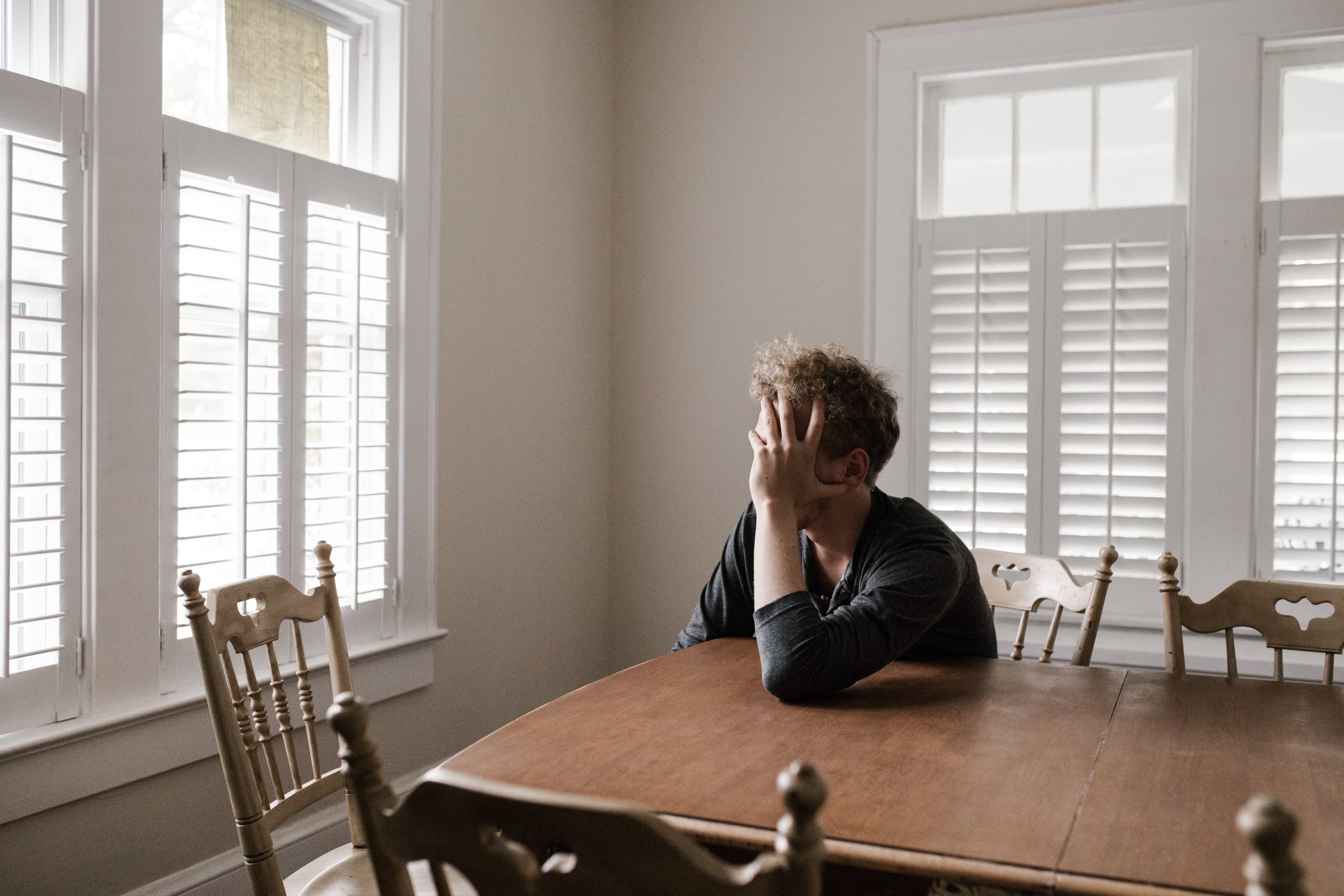
Quiet BPD: How to Recognize it in Teens & Young Adults
Borderline Personality Disorder (BPD) is a condition that affects around 1.4% of adults in the United States, according to the National Alliance on Mental Illness. But did you know that there is also a subtype of BPD known as Quiet BPD? Unlike the classic form, this type of BPD can be harder to spot, especially in teens and young adults who may not yet have fully developed communication skills.
What is quiet borderline personality disorder?
Quiet Borderline Personality Disorder (BPD) is a subtype characterized by internalized symptoms. Teens and young adults with quiet BPD experience intense emotions and fear of abandonment, often leading to self-isolation and difficulty expressing feelings in teens and young adults.
Signs and Symptoms of Quiet BPD
Recognizing symptoms of quiet BPD in teens and young adults is crucial for early intervention and support. Some common symptoms of quiet BPD include:
Social Withdrawal
Social withdrawal is a common symptom observed in teens and young adults with quiet BPD. It is often seen as a coping mechanism to avoid perceived rejection or abandonment. Individuals with quiet BPD may isolate themselves from social activities and relationships, which can contribute to feelings of loneliness, isolation, and self-destructive behavior.
Conflict Avoidance
Conflict avoidance is a common symptom experienced by teens and young adults with quiet BPD. Young people often go to great lengths to avoid any form of disagreement or confrontation. This can be attributed to their fears of abandonment and rejection, which drive their avoidance of conflict.
People Pleasing
Another common symptom of quiet BPD in teens and young adults is people-pleasing behavior. Those with quiet BPD often go to great lengths to avoid disappointing others or being seen as a burden. They may constantly seek validation and approval from those around them, sacrificing their own needs and desires in the process.
Self-Harm
Self-harm is a serious and concerning symptom often associated with quiet BPD in teens and young adults. It is a way for individuals to cope with overwhelming emotions and feel a sense of control over their pain. Self-harm can take various forms, such as cutting, burning, or scratching oneself.
Low Self-Esteem
Low self-esteem is a common characteristic among young people with quiet BPD. They often struggle with feelings of inadequacy and worthlessness, constantly questioning their value and abilities. This can be exacerbated by the fear of rejection and abandonment, leading to a constant need for validation from others.
Dissociation
During episodes of silent BPD, teens and young adults may experience dissociation, which is a detachment from reality. It can manifest as a feeling of being disconnected from oneself or one’s surroundings. Dissociation serves as a defense mechanism to cope with intense emotions or distress. Recognizing and addressing triggers for dissociation is also crucial in the treatment of quiet BPD. By identifying the situations or experiences that lead to dissociation, teens, young adults, and their parents can work towards finding healthier ways to cope.
Anger and Angry Outbursts
Anger and angry outbursts are another prominent feature of quiet BPD. While teens and young adults with this condition may appear calm and composed on the outside, they often struggle with intense anger that can be difficult to control. This anger may build up over time due to feelings of injustice, perceived rejection, or a sense of being misunderstood. As a result, those with quiet BPD may experience explosive outbursts or express hostility.
Fear of Abandonment
The fear of abandonment is a common experience for teens and young adults with quiet BPD. It is characterized by a constant fear of being left or rejected by loved ones. Due to this fear, individuals with quiet BPD often have difficulties trusting others. They may be skeptical of others’ intentions and struggle to form deep, meaningful connections. The fear of abandonment can lead to intense anxiety and distress when feeling abandoned or rejected.
To cope with their fear, teens and young adults with quiet BPD might constantly seek reassurance and validation from others. They may rely heavily on the opinions and approval of those around them, fearing that any sign of disapproval could result in abandonment. The fear of being alone is also prevalent, with young people constantly seeking companionship to avoid feelings of isolation.
Suicidal Thoughts
Recognizing the signs of suicidal thoughts in individuals with quiet BPD is crucial for providing the necessary support and intervention. The internal struggles experienced by silent BPD individuals, such as feelings of emptiness and hopelessness, can often lead to suicidal ideation. It is essential to take any mention of suicide seriously and seek help immediately.
High Functioning Appearance
High-functioning appearance is often seen in teens and young adults with quiet BPD. They have a knack for hiding their struggles behind a veneer of high standards and achievement. It can be quite challenging for others to recognize the emotional turmoil they are experiencing internally. This high-functioning appearance can lead to invalidated experiences and difficulties in seeking support.
Causes & Risk Factors of Quiet BPD
Many environmental and family-related factors can cause BPD. Genetic factors and a family history of mental illness can increase the vulnerability of developing quiet BPD in teens and young adults. Additionally, childhood trauma or neglect can contribute to the long-term effects of silent BPD symptoms. Environmental factors, such as unstable relationships or invalidating environments, may also play a significant role in the development of quiet BPD. Biological factors, including imbalances in brain chemicals, can further contribute to the manifestation of silent BPD. Co-occurring mental health conditions, like ADHD, can heighten the risk of experiencing quiet BPD.
Triggers that Can Lead to an Episode of Quiet BPD
Triggers are events or situations that can cause an episode of BPD in teens or adolescents. These triggers vary from person to person, but some common ones in quiet BPD include:
1. Emotional Instability
Emotional Instability is a common trigger for teens and young adults with quiet BPD. Their vulnerability to intense emotions can cause them to experience an episode characterized by mood swings, irritability, and difficulty regulating their emotions.
2. High Levels of Stress and Anxiety
High Levels of stress or anxiety can contribute to a meltdown in teens and young adults with quiet BPD. The pressure and overwhelming nature of these emotions can be overwhelming, making it challenging for them to cope effectively.
3. Interpersonal Conflict
Interpersonal conflict can also lead to symptoms of quiet borderline personality disorder. Individuals with quiet BPD may have difficulty navigating and maintaining relationships due to their fears of abandonment or rejection. For them, even minor conflicts can intensify their symptoms and trigger emotional distress.
4. Negative Experiences of Trauma
Trauma and negative experiences can act as potent triggers for teens and young adults with silent BPD. Past traumatic events can resurface and amplify their emotions, making it difficult for them to manage their feelings effectively. These triggers can include anything from childhood trauma to recent adverse experiences.
Quiet BPD Episodes
Quiet BPD episodes can be daunting for teens and young adults who experience them. During these episodes, the emotional turmoil intensifies, causing mood swings, irritability, and difficulties in regulating one’s emotions. It is important to recognize that high levels of stress and anxiety can contribute to these episodes. The overwhelming pressure of these emotions can make it challenging for teens and young adults with quiet BPD to cope effectively.
If you or your teen or young adult is struggling with a quiet BPD episode, you can try:
- Take a warm shower or bath.
- Play music that relaxes you.
- Engage in a physical activity.
- Do brain teasers or problem-solving activities.
- Talk to a sympathetic loved one.
- Draw, paint, or write; creative expression can help.
- Seek comforting environments and surroundings.
- Try relaxation exercises.

How is Quiet BPD Diagnosed?
Diagnosing quiet BPD involves a comprehensive psychological evaluation. Mental health professionals assess symptoms and their impact on daily life. Diagnostic criteria for borderline personality disorder, including quiet BPD, can be found in the DSM-5. Clinicians consider the unique presentation of quiet BPD when making a diagnosis.
Quiet BPD Treatment
When it comes to treating quiet BPD, several options can be effective in helping teens and young adults manage their symptoms and improve their overall well-being.
DBT Therapy
One of the main treatment approaches for quiet BPD is therapy, particularly dialectical behavior therapy (DBT). DBT focuses on teaching teens and young adults skills to regulate their emotions, improve interpersonal relationships, and cope with distressing situations. This type of therapy can be highly beneficial in helping individuals with quiet BPD develop healthier coping mechanisms and improve their overall quality of life.
Medication
Medication may also be prescribed to manage the symptoms of silent BPD. Antidepressants or mood stabilizers may be used to help regulate mood and alleviate symptoms such as depression or anxiety. It’s important to note that medication alone is not typically sufficient for treating quiet BPD, but can be used in combination with therapy for a comprehensive approach.
Schema Therapy
Another therapeutic approach that can be helpful for teens and young adults with quiet BPD is schema therapy. This type of therapy focuses on identifying and addressing underlying thoughts and beliefs that contribute to emotional distress and maladaptive behaviors. By challenging and reframing these core beliefs, teens and young adults with quiet BPD can experience significant improvements in their emotional well-being and overall functioning.
How Parents Can Help Teens and Young Adults with Quiet BPD
Supporting and guiding teens and young adults with quiet BPD can have a significant impact on their well-being. As parents, it is essential to educate ourselves about the symptoms and challenges associated with this condition. By understanding the unique aspects of quiet BPD, we can provide the support our children need.
1. Provide Unconditional Love and Support
One of the most important ways we can help is by offering unconditional love and support. Our children may experience intense emotions and struggle with self-worth. By showing teens and young adults that we are there for them, we create an environment where they feel safe and accepted. This support can be a pillar of strength for them as they navigate the ups and downs of quiet BPD.
2. Create a Strong Support Network
To support teens and young adults with silent BPD, it is crucial to provide understanding and encourage social engagement. Building a strong support network can help alleviate feelings of isolation and provide a sense of belonging. By offering empathy, caring, and affection, we can help those struggling with quiet BPD feel supported and understood.
3. Create a Safe Space
Creating a safe space and providing emotional support are crucial elements of quiet BPD treatment. Building a trusting and supportive relationship with a therapist or mental health professional can provide individuals with the validation and understanding they need to navigate their emotions. Additionally, group therapy can be an invaluable resource, offering a sense of belonging and support from others who may be experiencing similar challenges.
4. Communicate
Encouraging open and honest communication in a safe space is crucial when dealing with quiet BPD. Our children may find it difficult to express their emotions or fears of abandonment. By creating a space where they feel comfortable sharing, we open the door for them to voice their thoughts and concerns. Validation is also key – even if their emotions seem irrational to us, it is important to recognize and acknowledge their experiences.
5. Teach Mindfulness
Practicing mindfulness encourages teens and young adults to become more aware of their thoughts, emotions, and bodily sensations. It promotes self-care and helps develop skills to navigate difficult emotions.
6. Seek Help from a Mental Health Professional
Seeking professional help, such as therapy or counseling, is vital in managing quiet BPD. Mentalization-based therapy (MBT) can be particularly helpful for individuals with this condition. Through therapy, teens and young adults can learn valuable skills to regulate their emotions, build resilience, and develop healthier coping mechanisms. As parents, being actively involved in their treatment journey can make a positive difference.
Quiet BPD Wrap-Up
Recognizing quiet BPD in teens and young adults is crucial for early intervention and support. The symptoms of quiet BPD, such as social withdrawal, conflict avoidance, dissociation, fear of abandonment, and suicidal thoughts, may often go unnoticed or mistaken for normal teenage behavior. Parents, caregivers, and educators need to be aware of the signs and provide a supportive environment for these teens and young adults.
Understanding the causes, risk factors, and triggers of quiet BPD can help in developing effective treatment options. From therapy to medication, there are various ways to manage the symptoms and improve the quality of life for those living with quiet BPD. By seeking professional help and creating an open dialogue, parents can play a vital role in supporting their teens and young adults.
Remember, quiet BPD is a real and valid mental health condition that requires compassion, understanding, and appropriate treatment. If you or your teen or young adult requires assistance, contact us or give us a call at 818-906-4884.
